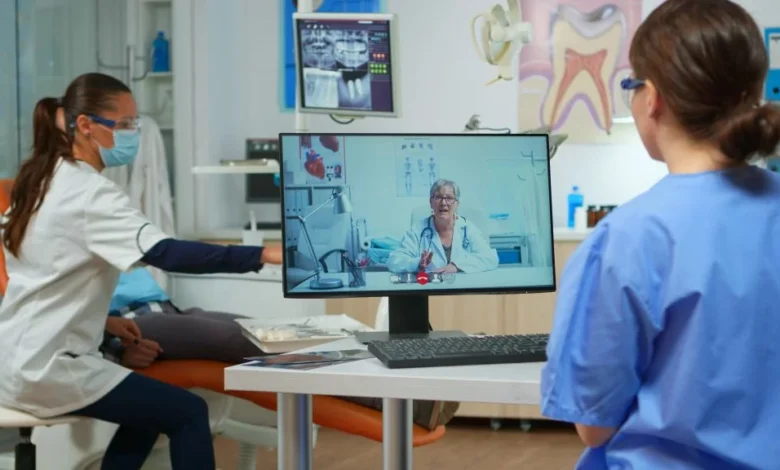Virtual vs. In-Person Medical Receptionists: Which One Is Right for Your Practice?

In today’s fast-paced healthcare environment, medical practices are continually looking for ways to optimize efficiency while providing excellent patient care. One of the most essential elements of any practice is managing patient interactions at the front desk, which is where the receptionist comes into play. Traditionally, this role has been filled by an in-person receptionist who handles phone calls, appointment scheduling, patient queries, and other administrative tasks. However, with the growing adoption of digital tools and remote work models, the concept of a virtual medical receptionist has emerged as a viable alternative to in-person staffing.
But how do these two options compare? Which one is the best choice for your practice? Let’s take a closer look at the key differences between a virtual medical receptionist and an in-person receptionist, evaluating factors such as cost, efficiency, patient experience, and operational needs to help determine which option is the right fit for your practice.
What Is a Virtual Medical Receptionist?
A virtual medical receptionist is a remote service or professional that handles various administrative tasks traditionally performed by an in-house receptionist. These tasks may include answering phone calls, scheduling appointments, managing patient records, and sending reminders or confirmations. The main difference between a virtual medical receptionist and an in-person receptionist is that the former operates remotely, often using online communication platforms and digital scheduling systems, while the latter works physically within the office, interacting with patients face-to-face.
Virtual medical receptionists can work as independent contractors, third-party services, or through software solutions designed to manage front-desk tasks. The technology used by virtual receptionists may vary, but it typically involves systems that enable seamless communication between the receptionist and the patients, making the interaction as effective as in-person support.
See also: Boost Your Beauty Routine: The Health Benefits of Food Supplements
The Benefits of an In-Person Medical Receptionist
- Personal Touch and Patient Interaction One of the most significant advantages of an in-person receptionist is the personal touch. Patients are accustomed to seeing a friendly face when they enter a healthcare facility, and having an in-house receptionist can make them feel more comfortable and at ease. The face-to-face interaction can help foster a sense of trust and familiarity, which can be especially important in healthcare settings where patients may feel anxious or overwhelmed.
- Immediate Assistance and Flexibility An in-person receptionist is available on-site and can quickly respond to any immediate issues or requests. Whether it’s a walk-in patient, a last-minute scheduling change, or an emergency, in-house receptionists can handle such tasks without delay. This flexibility allows the practice to respond more effectively to unforeseen circumstances, ensuring that patient needs are met in real time.
- On-Site Presence for Physical Tasks In-person receptionists are also essential for tasks that require physical presence, such as managing paper files, verifying patient identification in person, or coordinating with other staff members in the office. If your practice relies on physical documentation, in-person receptionists may be more adept at handling these tasks.
- Established Patient Relationships Patients who regularly visit your practice often develop a relationship with the receptionist. This rapport can improve patient satisfaction, as many patients appreciate the familiarity and personalized attention they receive when interacting with a known receptionist. A strong connection between a patient and the receptionist can lead to better communication and a more comfortable environment overall.
The Benefits of a Virtual Medical Receptionist
- Cost-Effectiveness One of the most significant advantages of hiring a virtual medical receptionist is cost savings. Hiring an in-house receptionist involves additional expenses, such as salaries, benefits, training, office space, and equipment. On the other hand, a virtual medical receptionist typically operates on a flexible, subscription-based model or per-service fee, reducing the overall financial burden. Since virtual receptionists work remotely, there is no need to allocate resources for office space or equipment, which can make this option especially attractive for smaller practices or those with limited budgets.
- 24/7 Availability A virtual medical receptionist can be available around the clock, ensuring that patient inquiries are addressed promptly at any time of day or night. For practices that need to manage patient calls or appointment bookings outside of normal business hours, a virtual receptionist offers the advantage of providing continuous service. This 24/7 accessibility can be particularly valuable for practices with busy schedules or for those that want to offer after-hours services to their patients.
- Reduced Administrative Burden Many administrative tasks, such as answering calls, scheduling appointments, and sending reminders, can be effectively handled by a virtual medical receptionist. By automating or outsourcing these responsibilities, healthcare providers can free up their in-house staff to focus more on patient care and less on administrative duties. This leads to greater overall productivity, as medical professionals and other staff members can spend more time delivering quality healthcare services.
- Improved Efficiency and Organization Virtual medical receptionists often use advanced scheduling software that integrates with the practice’s electronic health records (EHR) or patient management system. This technology enables better management of appointments, reminders, and follow-up communications, reducing the risk of scheduling conflicts or missed appointments. Virtual receptionists can also seamlessly handle multiple patient inquiries simultaneously, something that is not always possible with a busy in-house receptionist.
- Scalability As your practice grows, the administrative workload tends to increase. A virtual medical receptionist can scale quickly to meet the increased demand, handling more calls, appointments, and queries without the need to hire additional staff. This scalability makes virtual receptionists an ideal solution for practices that expect to expand or those that experience fluctuating workloads.
Which Option Is Right for Your Practice?
Choosing between a virtual medical receptionist and an in-person receptionist depends on several factors, including the size of your practice, budget, patient needs, and the type of services you provide. Let’s break down some considerations that may influence your decision:
- Practice Size and Budget Smaller practices or solo practitioners may find a virtual medical receptionist more cost-effective and manageable. Virtual receptionists offer a flexible and scalable solution, especially if your practice doesn’t have a high volume of patients or doesn’t need a full-time receptionist. On the other hand, larger practices or multi-location healthcare providers may prefer in-person receptionists to handle the increased volume of patients and provide on-site support.
- Patient Demographics Consider your patient demographic when making this decision. If you serve an older population or patients who may prefer face-to-face interactions, an in-person receptionist could be the better choice. Patients who are familiar with digital communication may be more comfortable with a virtual medical receptionist, especially if they are accustomed to online scheduling and remote interactions.
- Practice Workflow If your practice requires frequent in-person interactions for administrative tasks or hands-on management of patient files, an in-house receptionist may be more beneficial. However, if your practice is heavily reliant on scheduling, answering calls, and sending reminders, a virtual medical receptionist can streamline these tasks and improve efficiency.
- Level of Personalization While virtual receptionists can still offer personalized service through tailored communication, the personal touch of an in-person receptionist may be more important if building long-term relationships with patients is a priority. In-house receptionists have the advantage of establishing rapport with patients over time, which can enhance the overall patient experience.
Conclusion
Both virtual and in-person medical receptionists have distinct advantages, and the right choice for your practice will depend on various factors. Portiva virtual medical receptionist offers cost savings, flexibility, 24/7 availability, and reduced administrative burden, making it a great option for smaller practices, those with fluctuating workloads, or healthcare providers focused on scalability. In contrast, an in-person receptionist excels in providing personal interaction, immediate assistance, and handling physical tasks, which may be essential for larger practices or those that prioritize patient relationships.
Ultimately, the key is to assess your practice’s specific needs, workflow, and budget to determine which option best aligns with your goals. Some practices may even find that a combination of both virtual and in-person receptionists offers the best of both worlds, providing the flexibility and cost-efficiency of virtual receptionists while maintaining the personal touch of on-site staff. Whichever option you choose, ensuring that your practice runs smoothly and provides exceptional patient care should remain the top priority.






